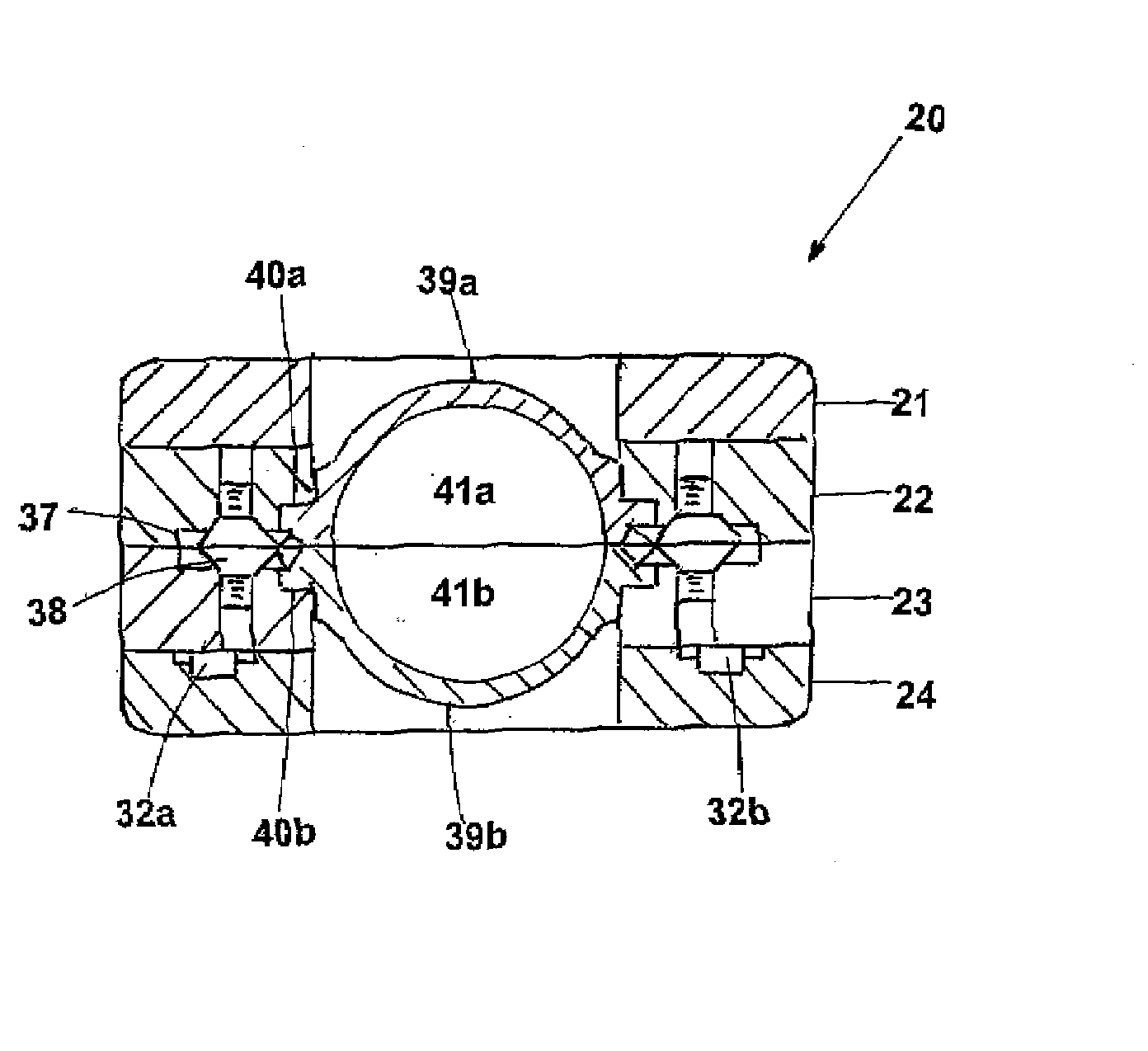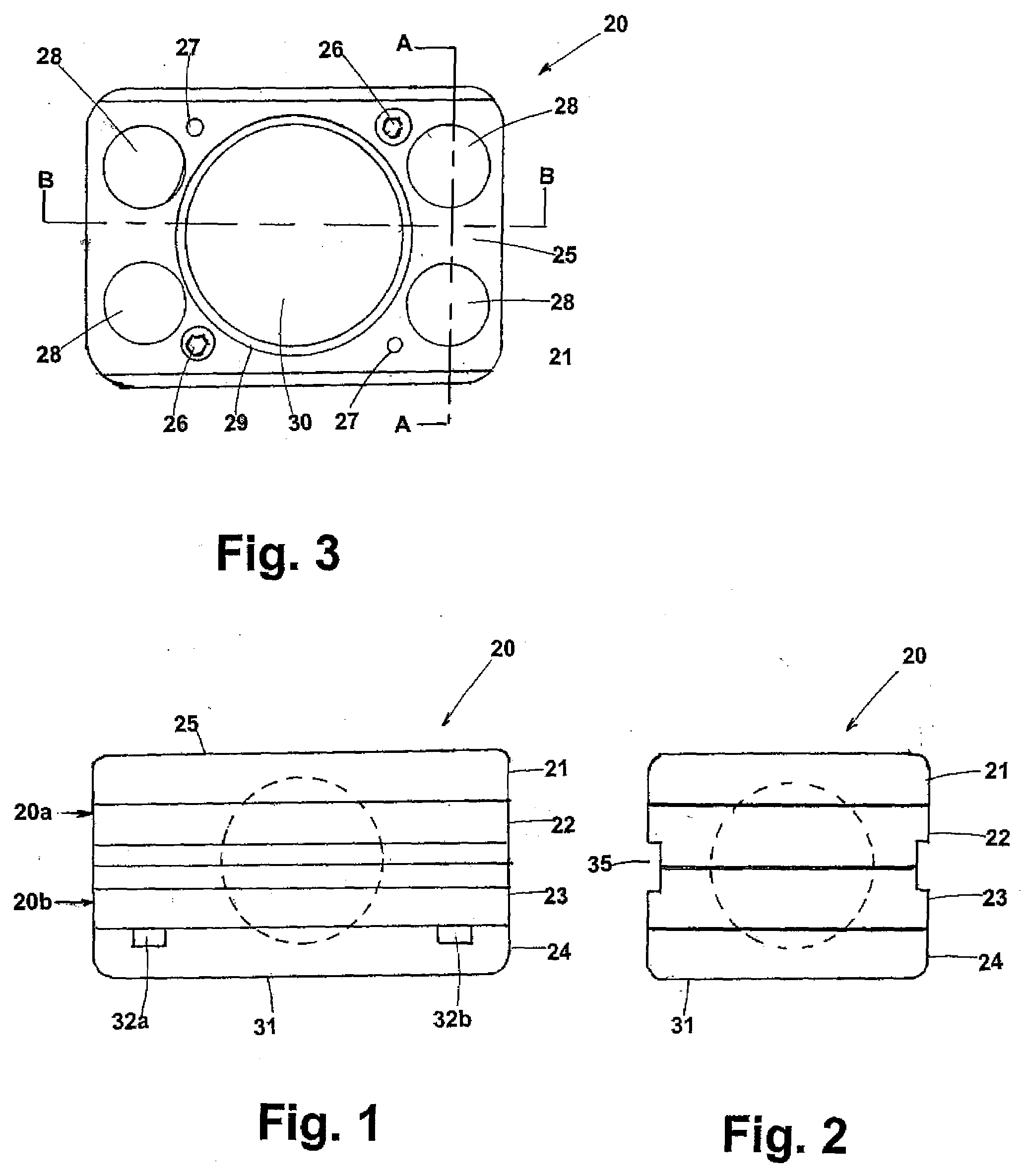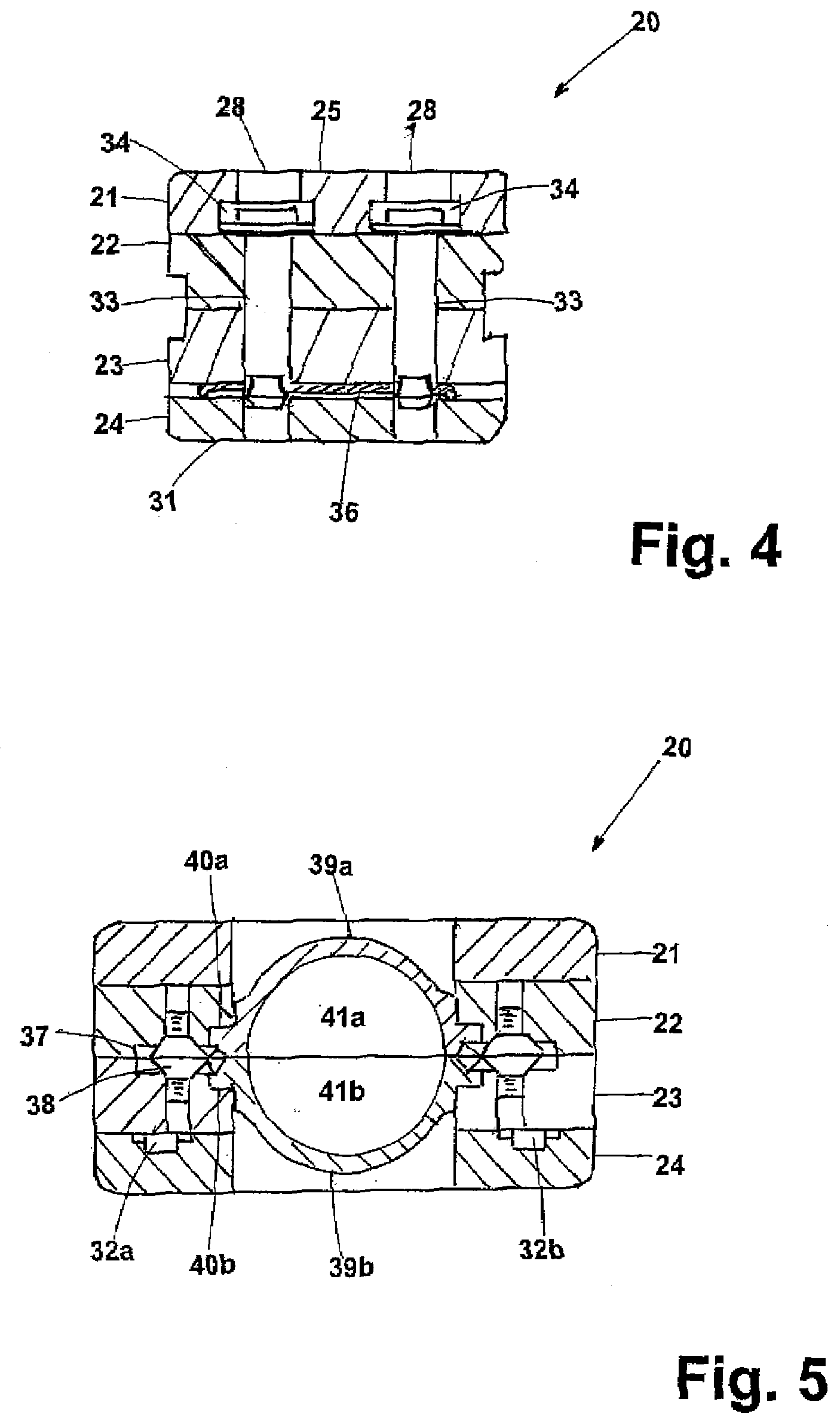Mold for forming golf ball covers
- Summary
- Abstract
- Description
- Claims
- Application Information
AI Technical Summary
Benefits of technology
Problems solved by technology
Method used
Image
Examples
Embodiment Construction
[0039]There are conventional multi-cavity mold frames such as referenced by U.S. Pat. No. 6,439,873, which are used for casting a layer for a golf ball. Typically, these type molds are used to cast polyurethane covers on a golf ball sub-assembly (not shown). The Acushnet Company (assignee of this application) has for many years used multi-cavity molds that provide four cavities in a mold frame. A significant problem of these compression molds is the inability to achieve equally distributed positive clamping force on the golf balls being formed. The closure of these type molds is accomplished by using vertical pistons, torque clutch / motor assembly, and an assembly of belts, pulleys and torque bits. Each four cavity mold has four bolts to fasten the mold halves together. The constant bolting and unbolting to open and close the mold halves causes an uneven wear and tear of the bolts creating a significant variation in torque between the bolts, resulting in a major source of contaminati...
PUM
| Property | Measurement | Unit |
|---|---|---|
| Mass | aaaaa | aaaaa |
| Force | aaaaa | aaaaa |
| Size | aaaaa | aaaaa |
Abstract
Description
Claims
Application Information
 Login to View More
Login to View More - R&D
- Intellectual Property
- Life Sciences
- Materials
- Tech Scout
- Unparalleled Data Quality
- Higher Quality Content
- 60% Fewer Hallucinations
Browse by: Latest US Patents, China's latest patents, Technical Efficacy Thesaurus, Application Domain, Technology Topic, Popular Technical Reports.
© 2025 PatSnap. All rights reserved.Legal|Privacy policy|Modern Slavery Act Transparency Statement|Sitemap|About US| Contact US: help@patsnap.com



